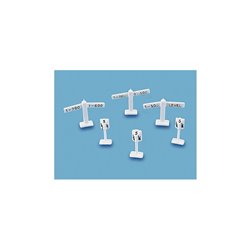'Modern Image' is a term used by many modellers to describe a layout that portrays modern times, for most this will...
No products
Product successfully added to your shopping cart
There are 0 items in your cart. There is 1 item in your cart.
Search Tips
What is a distance marker (milepost)?
Railway mileposts (or distance markers) are signs placed at specified intervals along railway lines to give reference to locations along the route. The reference is always relative to a defined point (often a large station or junction). The usage of mileposts on railways has been the law in England, Scotland and Wales since 1845 and was introduced to identify the location of any incidents and to ensure passengers were charged appropriately for the mileage they had travelled. The new system also had practical applications for engineers tasked with planning and maintaining the tracks.
The original 1845 law required that railways should measure their routes and erect posts (or other conspicuous objects) at 1/4 mile intervals along their lines. The signs were to display information denoting their whereabouts in relation to a defined point on the line known as a zero point. The wording of the legislation was pretty vague regarding the actual design of the posts and resulted in many different designs being established varying in shape, size, colour and even how the information is displayed.
Click here to receive the tips weekly in your mailbox. You can unsubscribe at any time.








